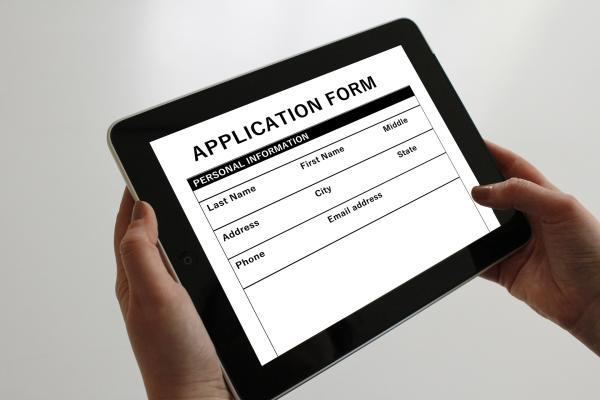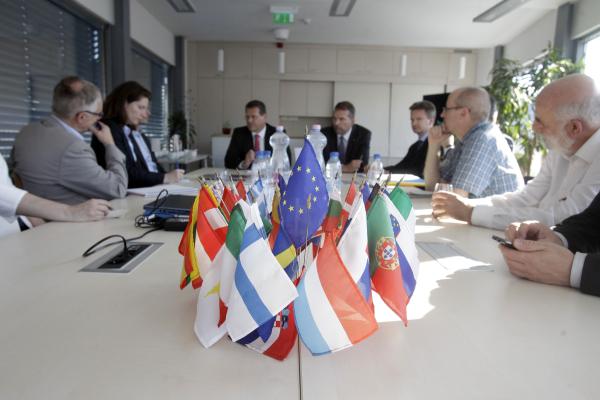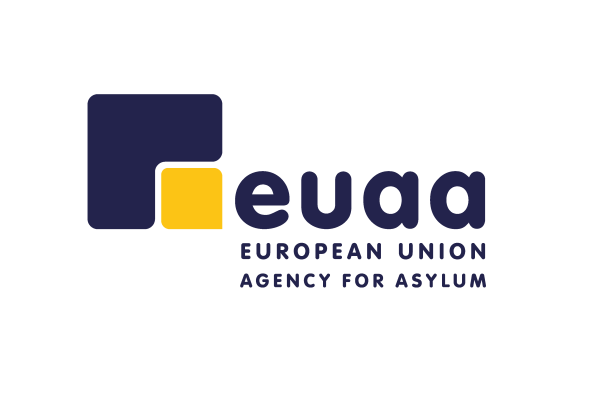The European Union is an area of protection for people fleeing persecution or serious harm in their country of origin.
Asylum is a fundamental right and an international obligation for countries, as recognised in the 1951 Geneva Convention on the protection of refugees.
In the EU, an area of open borders and freedom of movement, member countries share the same fundamental values and joint approach to guarantee high standards of protection for refugees.
EU countries have a shared responsibility to welcome asylum seekers in a dignified manner, ensuring that they are treated fairly and their case is examined following uniform standards. This ensures that, no matter where an applicant applies, the outcome will be similar. Procedures must be fair, effective throughout the EU, and impervious to abuse.
However, asylum flows are not constant, nor are they evenly distributed across the EU. They have, for example, variated from over 1.8 million in 2015 to around 142,000 in 2019, a decrease of 92%.
With this in mind, since 1999, the EU has established a Common European Asylum System (CEAS). In 2020, the European Commission proposed to reform the system through a comprehensive approach to migration and asylum policy based on three main pillars:
- efficient asylum and return procedures,
- solidarity and fair share of responsibility and
- strengthened partnerships with third countries.
Legislation and agency support
The Common European Asylum System sets out common standards and co-operation to ensure that asylum seekers are treated equally in an open and fair system – wherever they apply. The system is governed by five legislative instruments and one agency:
- The Asylum Procedures Directive aims at setting out the conditions for fair, quick and quality asylum decisions. Asylum seekers with special needs receive the necessary support to explain their claim and in particular protection of unaccompanied minors and victims of torture is ensured.
- The Reception Conditions Directive ensures that common standards for reception conditions (such as housing, food and clothing and access to health care, education or employment under certain conditions) are provided for asylum seekers across the EU to ensure a dignified standard of living in accordance with the Charter of fundamental rights.
- The Qualification Directive clarifies the grounds for granting international protection and therefore making asylum decisions more robust. It also provides access to rights and integration measures for beneficiaries of international protection.
- The Dublin Regulation enhances the protection of asylum seekers during the process of establishing the State responsible for examining the application, and clarifies the rules governing the relations between states. It creates a system to detect early problems in national asylum or reception systems and address their root causes before they develop into fully fledged crises.
- The EURODAC Regulation supports the determination of the Member State responsible under the Dublin Regulation and allows law enforcement authorities access to the EU database of the fingerprints of asylum seekers under strictly limited circumstances in order to prevent, detect or investigate the most serious crimes, such as murder, and terrorism.
- The European Union Agency for Asylum contributes to improving the functioning and implementation of the Common European Asylum System. It provides operational and technical assistance to Member States in the assessment of applications for international protection across Europe.
Towards a reform of the Common European Asylum System (CEAS)
- 1999 – 2005Creation of first laws
In 1999, the European Council committed to work towards establishing a Common European Asylum System, based on the full and inclusive application of the Geneva Convention.
The commitments undertaken under the Tampere Programme heralded the beginning of the Common European Asylum System and led to the adoption of several EU laws.
Between 1999 and 2005, six legislative instruments establishing minimum standards for asylum were adopted: the Eurodac Regulation, the Temporary Protection Directive, the Reception of Asylum Seekers Directive, the Dublin Regulation replacing the 1990 Dublin Convention, the Qualification Directive and the Asylum Procedures Directive.
- 2008 – 2013First reforms
After the completion of the first phase, a period of reflection was necessary to determine the direction in which the CEAS should develop. The situation across EU Member States was still too varied and the levels of protection still not strong enough. This led to the European Commission’s Policy Plan on Asylum presented in June 2008, which set the basis for building a system of common and uniform standards for protection.
Along with the Plan, the Commission presented a set of reformed EU asylum laws, which were completed in 2013. Among the novelties, the European Asylum Support Office was established specifically to assist Member States in implementing EU asylum law and to enhance the practical cooperation.
- From 2015 onwardsNew challenges and reforms
In 2015, the unprecedented high number of arrivals of refugees and irregular migrants in the EU exposed a series of deficiencies and gaps in Union policies on asylum. Therefore, the European Commission proposed in May and July 2016 a third package of seven pieces of legislation with the aim to move towards a fully efficient, fair and humane asylum policy which can function effectively also in times of high migratory pressure.
In 2017, the European Parliament and the Council reached a broad political agreement on five out of the seven proposals, namely as regards the setting-up of a fully-fledged European Union Asylum Agency, the reform of Eurodac, the review of the Reception Conditions Directive, the Qualification Regulation, and the EU Resettlement framework. However, the Council did not reach a common position on the reform of the Dublin system and the Asylum Procedure Regulation. While in 2020 the Commission is proposing amendments to some of these proposals, it has been supporting a quick adoption of the proposals on which a political agreement has been reached by the co-legislators. These proposals include:
The Qualification Regulation
Replacing the Qualification Directive (Directive 2011/95/EU) with a regulation, aims at achieving more convergence in asylum decision-making. The regulation would change current optional rules providing common criteria for recognising asylum applicants to obligatory rules, by further clarifying and specifying the content of international protection, in particular regarding the duration of residence permits and social rights, and by establishing rules aimed at preventing unauthorised movements.
By replacing the Qualification Directive with a regulation, protection standards will be harmonised across the EU, by creating greater convergence of recognition rates and forms of protection. The new regulation will introduce stricter rules sanctioning unauthorised movements and strengthening integration incentives for beneficiaries of international protection. The new regulation will clarify the criteria for granting international protection in particular by making the application of the internal protection alternative compulsory for Member States as part of the assessment of the application for international protection. The content of protection will also clarify the rights and obligation of the beneficiary of international protection.
A recast Reception Conditions Directive
The Reception Conditions Directive will ensure asylum seekers receive decent conditions throughout the EU, reduce incentives for abuse and increase the possibility for asylum seekers to be self-reliant.
Member States will be obliged to have contingency plans in place to ensure sufficient reception capacity at all times, including in times of disproportionate pressure. Asylum seekers will be provided with full reception conditions only in the Member State responsible for their asylum application. This will help prevent asylum seekers from travelling from Member State to Member State.
To ensure an efficient procedure, Member States will be able to allocate asylum seekers to a geographical area within their territory, assign them a place of residence and impose reporting obligations to discourage them from absconding. Asylum seekers with well-founded claims will be granted the right to work no later than six months after their application is registered. Minors will receive education within two months after their asylum request is lodged. Unaccompanied minors will immediately receive assistance and will be appointed a representative no later than 15 days after an asylum application is made.
A reinforced European Union Asylum Agency
In view of the crucial role the previous Agency - EASO was playing in addressing the migration crisis and its limited mandate, on 4 May 2016 the Commission presented a new proposal for a European Union Asylum Agency (EUAA). Following a political agreement by the co-legislators on this proposal in 2017, the Commission called for a quick adoption of the proposal for the EU Agency on Asylum in the Pact on Asylum and Migration. Following the successful conclusion of the negotiations with the European Parliament and Council, the regulation of the agency was adopted on 15 December 2021 and subsequently entered into force on 19 January 2022.
The EU Asylum Agency replaced the European Asylum Support Office (EASO) with a strengthened mandate. This represents an important step forward in regards to the Pact on Migration and Asylum as the new mandate reinforces EUAA’s operational capacity, equipping it with the necessary staff, tools and financial means. The operational support of EUAA is critical in strengthening the European asylum system to ensure that asylum decisions are taken in a fast and fair manner, with the same high quality everywhere in Europe, bringing Member States’ asylum systems closer to each other.
An EU Resettlement Framework
An EU Resettlement Framework would establish a permanent framework with a unified procedure for resettlement across the EU. While the Member States will remain the ones deciding on how many people will be resettled each year, by coordinating national efforts and acting as a whole, the EU will have a greater impact and will be able to contribute collectively and with one single voice to global resettlement efforts.
In 2018, the Commission also proposed a recast of the Return Directive in response to the existing obstacles to an effective return policy. The recast aims at making the EU rules fit for purpose in successfully addressing the risk of absconding, providing assistance to voluntary returns, ensuring proper monitoring of national procedures, and streamlining administrative and judicial procedures. In 2019, the Council reached a partial general approach on the text, except regarding the border procedure for returns. In the European Parliament, work to reach a negotiation mandate continues.
Pact on Migration and Asylum
In September 2020, the Commission adopted a New Pact on Migration and Asylum, containing a number of solutions through new legislative proposals and amendments to pending proposals to put in place a system that is both humane and effective, representing an important step forward in the way the Union manages migration.
Related news

The Asylum Procedures Directive creates a coherent system to ensure that decisions on applications for international protection are taken efficiently and fairly.

Temporary protection is an exceptional measure to provide immediate and temporary protection to displaced persons from non-EU countries.

The Qualification Directive sets out criteria for applicants to qualify for refugee status or subsidiary protection status and the rights of people afforded this status.

The Reception Conditions Directive aims at ensuring common standards of reception conditions throughout the EU.

The objective of the Dublin III Regulation is to ensure quick access to the asylum procedures and the examination of an application on the basis by a single EU country.

Learn how EU agencies are collecting and presenting regular updates of data on migration across EU countries.

The European Union Agency for Asylum contributes to the implementation of the Common European Asylum System.
